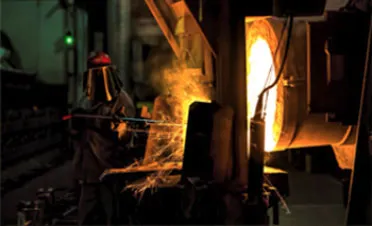aluminium high pressure die casting process
Understanding the Aluminium High Pressure Die Casting Process
Aluminium high pressure die casting is a manufacturing process widely utilized in various industries due to its efficiency in producing complex and high-precision components. This method involves forcing molten aluminium under high pressure into a mold cavity, where it solidifies to form a desired part. The advantages of this process play a crucial role in sectors like automotive, aerospace, and consumer electronics, among others.
The Process Overview
The high-pressure die casting process begins with the melting of aluminium alloy, typically in a furnace. Once the aluminium reaches the desired temperature, it is injected into a die through a nozzle. The pressure used during this step often exceeds 10,000 psi, ensuring that the molten metal fills all the intricate details of the mold. The die is usually made from heat-resistant steel and is designed to withstand the pressures of the injection process as well as the high temperatures of molten metal.
After the cavity is filled, the molten aluminium solidifies quickly due to the cooling effects of the steel die. The entire process from injection to solidification can take just a few seconds to a couple of minutes, significantly reducing production time compared to other methods such as sand casting. Once cooled, the die opens, and the finished part is ejected. This rapid cycle allows for high-volume production with minimal waste, which is one of the main reasons why many manufacturers choose aluminium high pressure die casting.
Benefits of Aluminium High Pressure Die Casting
There are several compelling benefits to using aluminium in the high-pressure die casting process. Firstly, aluminium is lightweight, which is particularly advantageous in automotive and aerospace applications where weight reduction is crucial for improving fuel efficiency. Additionally, aluminium alloys exhibit excellent strength-to-weight ratios, making them suitable for high-performance components.
Another significant advantage is the superior surface finish and dimensional accuracy that this casting method provides. The high pressure used ensures that small details are preserved, resulting in components that often require little to no further machining. This efficiency not only saves time during production but also reduces material costs and labor expenses.
aluminium high pressure die casting process

Moreover, aluminium has a high resistance to corrosion, further enhancing the longevity of the cast parts
. This characteristic is essential for components exposed to harsh environments, such as engine parts or outdoor fixtures.Environmental Considerations
The aluminium high pressure die casting process is also considered environmentally friendly compared to other manufacturing methods. The process generates less waste and uses less energy, largely due to the rapid production cycles. Furthermore, aluminium itself is highly recyclable, which means that end-of-life products can be melted down and reused in new casting processes, promoting a circular economy.
Challenges and Solutions
Despite its many advantages, there are challenges associated with aluminium high pressure die casting. Issues like porosity, which can weaken the final product, often arise due to trapped air or gas in the molten metal. Advanced techniques, such as vacuum die casting and improved die design, are being employed to mitigate these concerns.
Additionally, the initial investment in high-quality dies and equipment can be significant. However, the long-term cost savings resulting from high-volume production often justify these initial expenditures.
Conclusion
In conclusion, aluminium high pressure die casting is a highly efficient and valuable manufacturing process that offers numerous advantages, including weight reduction, dimensional accuracy, and environmental sustainability. As industries continue to demand higher performance materials and components, this casting method is likely to remain a pivotal technology in the manufacturing sector. With ongoing advancements aimed at addressing existing challenges, the future of aluminium high pressure die casting looks promising, ensuring its relevance for years to come.
-
Precision Sheet Metal Stamping Manufacturer | Fast & ReliableNewsAug.01,2025
-
OEM Sand Cast Pump Valve Fittings - Baoding Hairun Machinery And Equipment Trading Co., Ltd.NewsAug.01,2025
-
Custom OEM Impellers | High Efficiency & PrecisionNewsAug.01,2025
-
OEM Sand Cast Pump Valve Fittings - Baoding Hairun Machinery | Customization, Quality AssuranceNewsAug.01,2025
-
OEM Sand Cast Pump Valve Fittings - Baoding Hairun Machinery And Equipment Trading Co., Ltd.NewsAug.01,2025
-
OEM Sand Cast Pump Valve Fittings - Baoding Hairun Machinery And Equipment Trading Co., Ltd.NewsJul.31,2025















